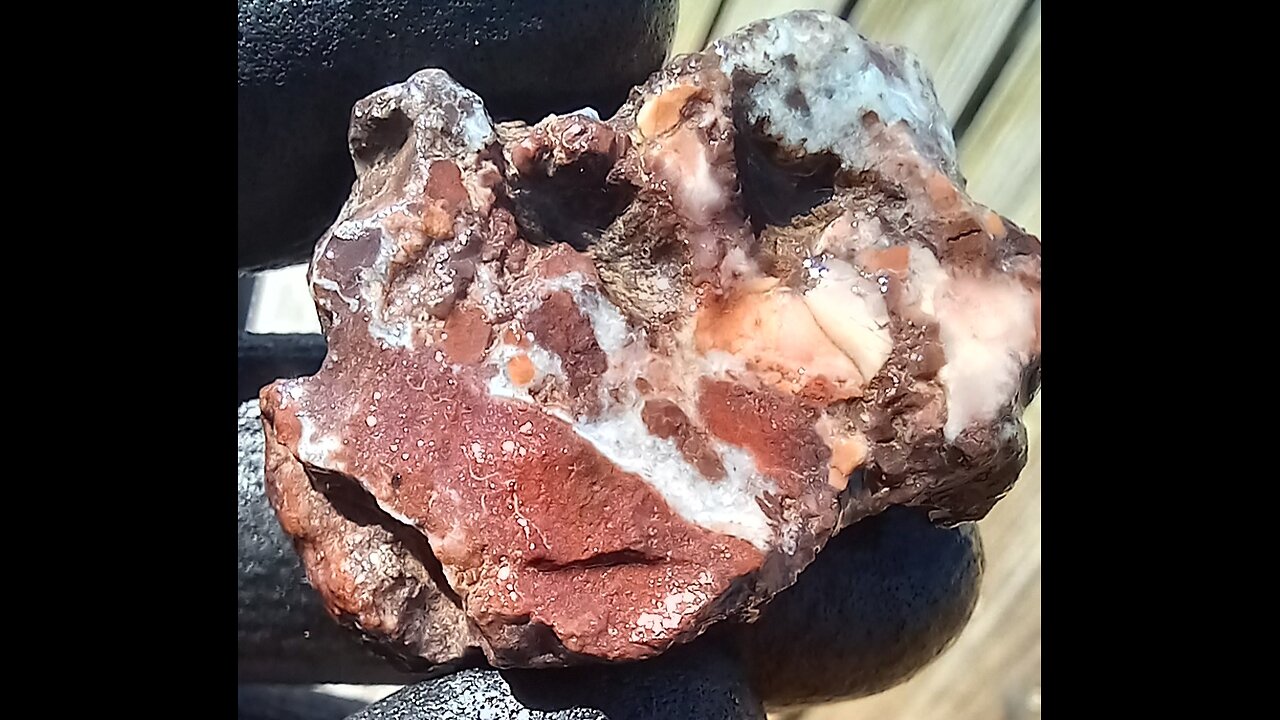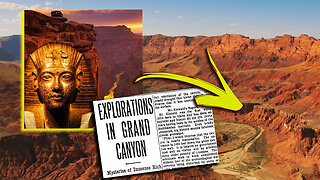Premium Only Content

Lil' bit of opal!
Opal is a hydrated amorphous form of silica, with a water content typically between 3 and 21% by weight, most commonly around 6-10%. It's deposited at relatively low temperatures and can be found in the fissures of various rock types, including limonite, sandstone, rhyolite, marl, and basalt. Here's a deeper look into opal:
Types of Opal:
Precious Opal: Known for its "play-of-color," which is an optical phenomenon where colors flash or change as the angle of light or observation changes. This effect is due to the diffraction of light through the microscopic silica spheres within the opal.
Common Opal: Lacks the play-of-color and can come in a variety of colors like white, black, grey, yellow, orange, red, or brown. It's often referred to as "potch" when not gem-quality.
Fire Opal: Typically ranges in color from yellow to orange to red and can be transparent to translucent. Fire opals can exhibit play-of-color, but their name comes from the fiery body color.
Boulder Opal: A type of opal naturally attached to its host rock. It's often cut with the host rock to provide stability and to enhance the visual appeal.
Matrix Opal: The opal fills the cracks and cavities within the host rock, creating a network of opal that's visible on the surface.
Formation:
Primary Opal: Forms through the slow deposition of silica from groundwater in cavities or fractures of rocks.
Secondary Opal: Can form by weathering or alteration of other minerals, often in more superficial environments or through the action of silica-rich waters.
Locations:
Australia: The world's leading source, especially for precious opal, with significant deposits in places like Coober Pedy, Lightning Ridge, and White Cliffs.
Ethiopia: Known for its black opals and more recently discovered opal fields.
Mexico: Famous for fire opals.
Brazil: Produces a variety of opals, including crystal opal.
Properties:
Hardness: Typically ranges between 5.5 to 6.5 on the Mohs scale, though it can be softer if less hydrated or harder if more silica-rich.
Luster: Can range from waxy to resinous to vitreous.
Transparency: Varies from opaque to semi-translucent to transparent.
-
 1:25:43
1:25:43
Game On!
16 hours ago $3.58 earnedNFL Insiders Reveals SHOCKING Draft News!
17.1K5 -
 1:00:02
1:00:02
Dad Dojo Podcast
15 hours ago $3.57 earnedEP28: Teen Stabbed At Track Meet
24.6K9 -
 13:49
13:49
Mrgunsngear
14 hours ago $6.61 earnedHow many PUBG Cast Iron Skillets Does It Take To Stop A Bullet?
44K13 -
 12:01
12:01
Clownfish TV
21 hours agoHollywood HELLSCAPE: L.A. is the New DETROIT?!
33.3K23 -
 16:05
16:05
Nick Freitas
15 hours agoSaving a Billion a Day
45.3K6 -
 16:49
16:49
CarlCrusher
1 day agoBizarre Secret Mysteries of the Grand Canyon and Colorado River Badlands
37.3K10 -
 28:57
28:57
Esports Awards
20 hours agoVeracity From Unsung Hero to International Esports Host | Origins Podcast #3
39.6K2 -
 6:38
6:38
The Official Steve Harvey
21 hours ago $2.02 earnedMy accountant died... I owed 22 million dollars 😱
34.7K14 -
 18:05
18:05
Degenerate Jay
23 hours ago $2.86 earnedThis Is Ruining Video Game Development
53.1K7 -
 26:14
26:14
Neil McCoy-Ward
21 hours ago"We've Lost Control!" - (Says FRENCH 🇫🇷 Police Chief..
52.6K41